Photos: Lost 'Govan Stones' Are Found Again
Lost and Found
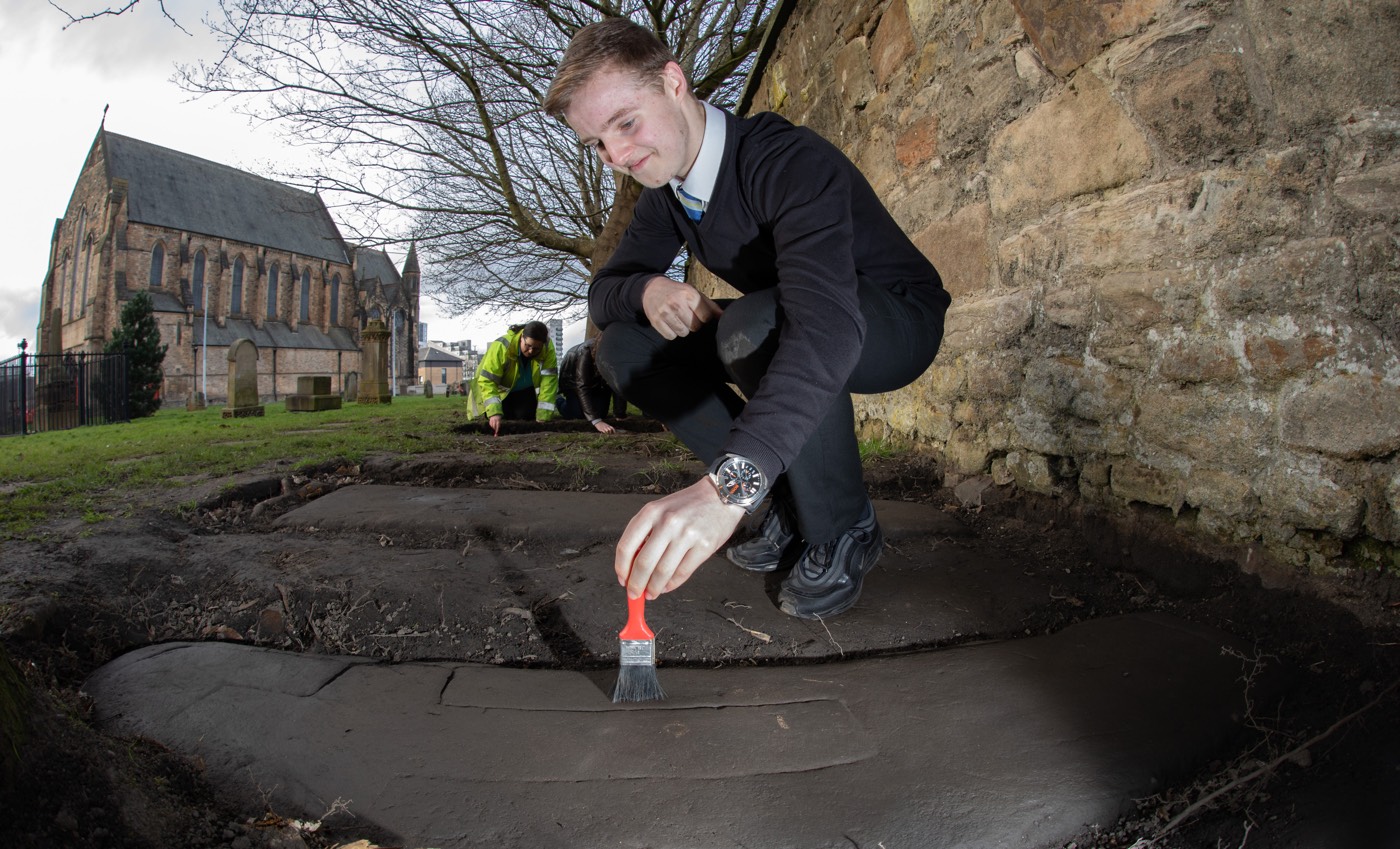
Mark McGettigan, 14, poses next to a long-lost Govan Stone, carved a thousand years ago and thought to be lost forever in the 1970s. Forty-six of these stones were found in the Govan Old Parish Church in Glasgow during the 1800s. Of those, 31 had been taken into the church museum for display in 1973, when the shipyard next door was demolished. The remaining stones were thought to have been crushed and carted away with the rubble. Now, though, McGettigan and other volunteers have unearthed three of the missing stones. [Read more about the Long-Lost Medieval Gravestones]
Archaeology team
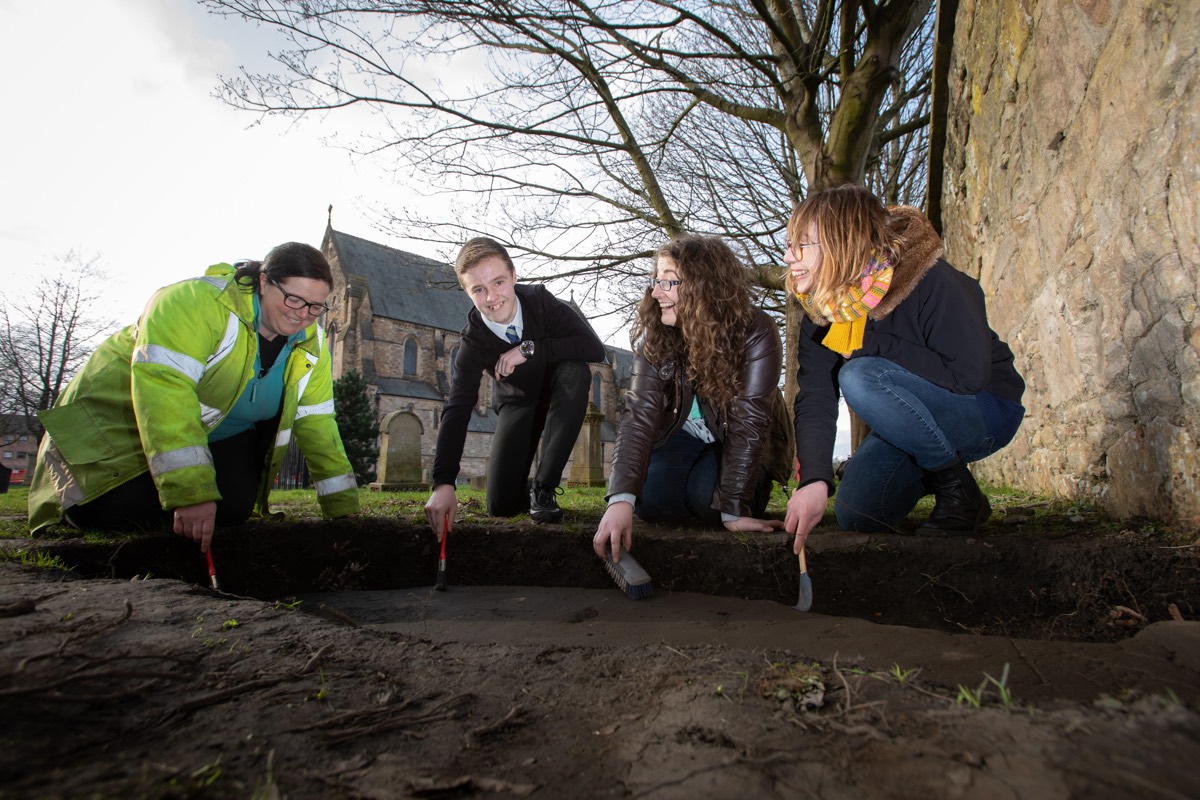
Archaeologists and volunteers pose around one of the newly unearthed Govan Stones. From left to right: Nicola Reid, field archaeologist with Northlight Heritage; Mark McGettigan, a 14-year-old volunteer; Megan Kasten, a project officer at Northlight Heritage; and Ingrid Shearer, the community engagement officer for Stones & Bones excavations.
Emerging from Earth
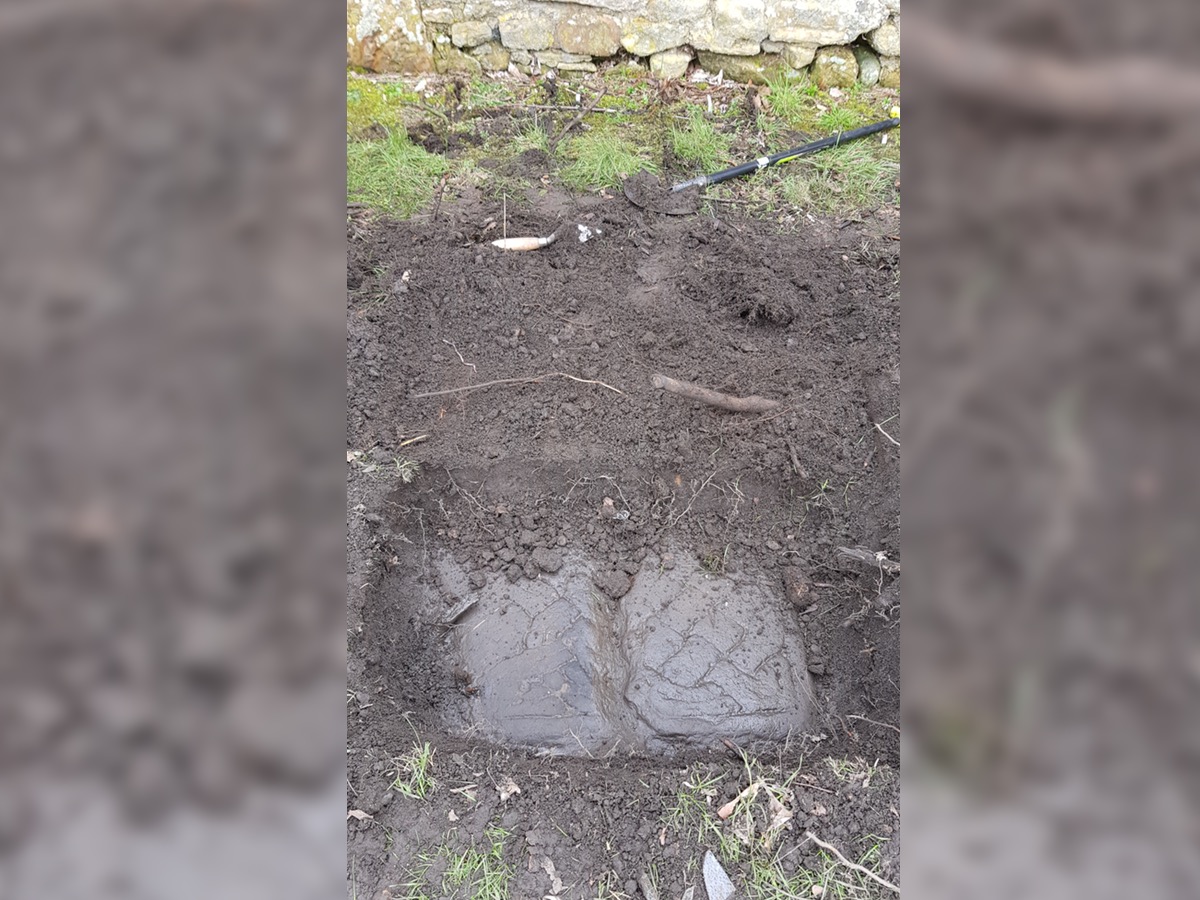
A Govan Stone emerges from the dirt. The Kingdom of Strathclyde was conquered by the Scots sometime after A.D. 1000. Archaeologists have found evidence of Christian artifacts and activities on this site dating back to about A.D. 500, and the site has hosted a number of refurbished and rebuilt Christian churches over the centuries. The current Govan Old Church opened in 1888.
Intricate carvings
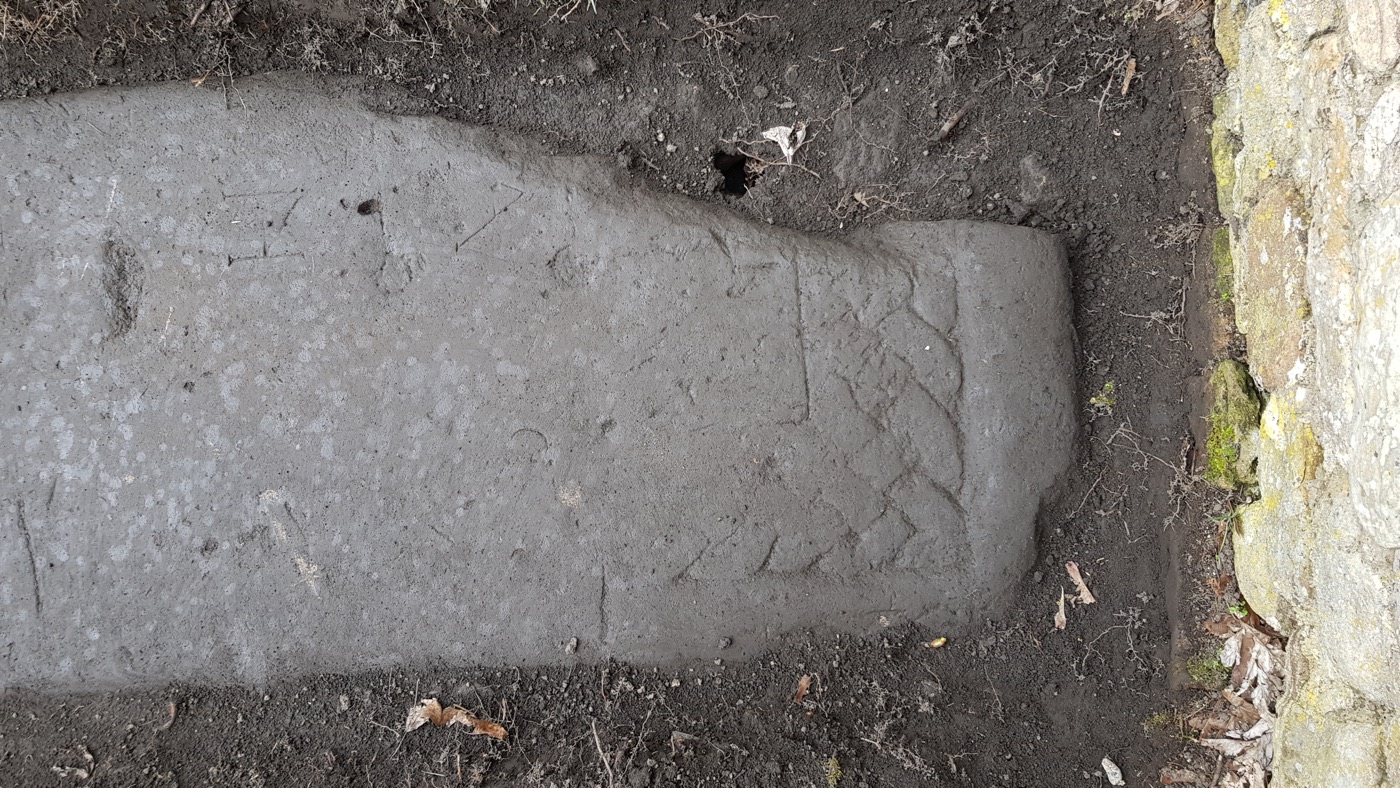
A detailed look at the border of one of the newly discovered Govan Stones. Artisans of the period also carved narrow, sloped grave markers called "hogbacks" and freestanding crosses. The most elaborate carving found in the churchyard is a stone sarcophagus carved with the image of a warrior on horseback. The sarcophagus was found in 1855, according to archaeologist Stephen Driscoll. It's carved out of a single block of sandstone and might have been made to hold the bones of King Constantine, I, a Celtic royal who died in battle with the Vikings in A.D. 876.
Missing history
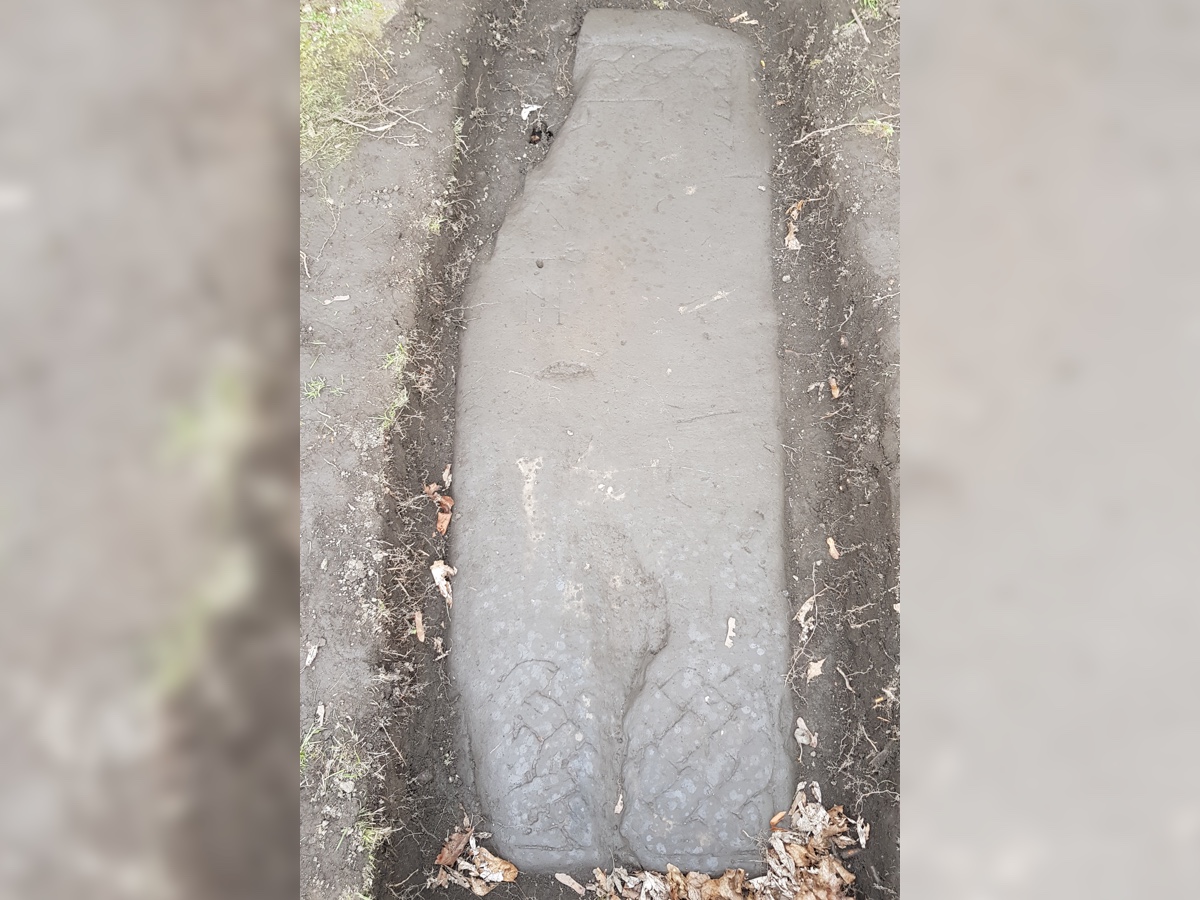
One of the three newly discovered Govan Stones. These stones were all carved between about A.D. 800 and 1050, at a time when the town of Govan was part of the pre-Scottish Kingdom of Strathclyde. Artisans at the time marked graves with stones and crosses carved with interlocking Celtic patterns. This slab would have rested on top of a grave. It's been moved around since its original use — some slabs were even reused for later graves — so there are no human remains under the slab.
Amateur archaeologist
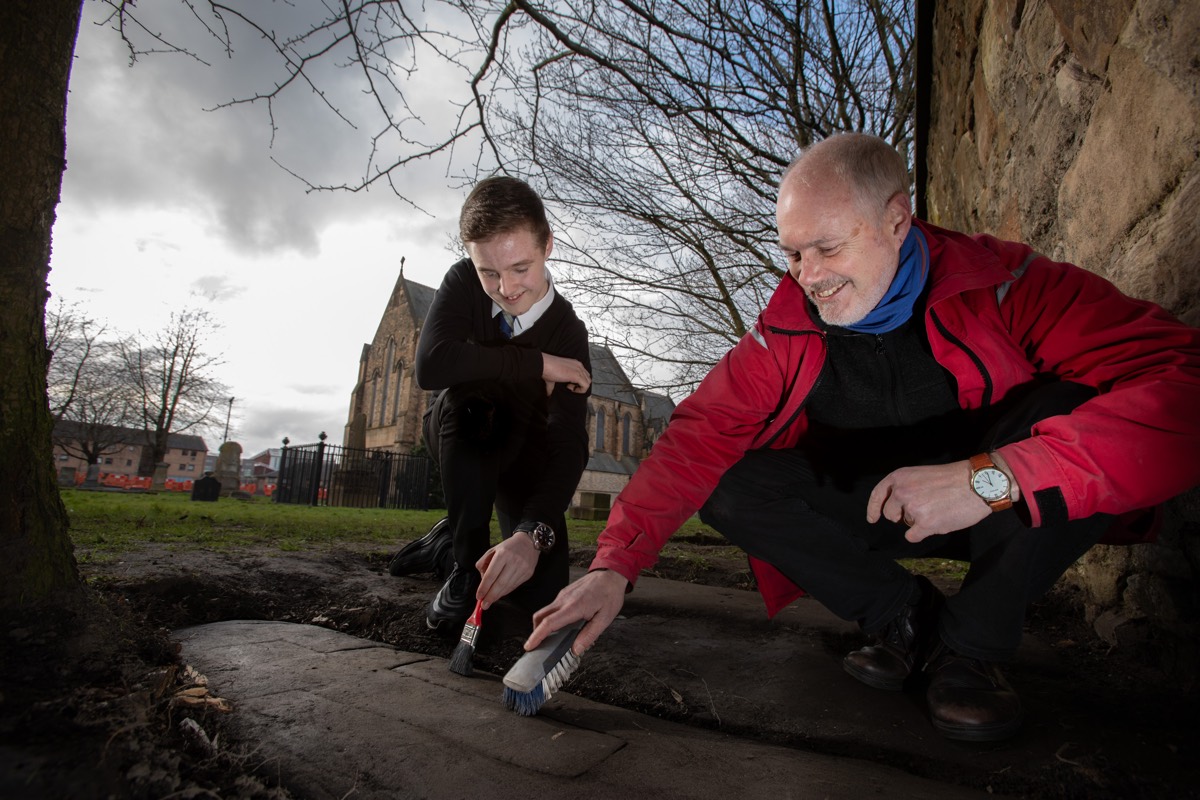
Local student Mark McGettigan, 14, seen here with University of Glasgow archaeologist Stephen Driscoll, has a long-standing interest in archaeology. He and his mother joined the Govan dig as volunteers. McGettigan was using a probe in the church graveyard when it hit something hard and made a noise. He and two archaeologists on the dig began to excavate.
"I wasn't too sure at the start what it was," McGettigan said in a statement. "But then we checked with the records and we realized it was one of the lost Govan Stones."
Carved stones
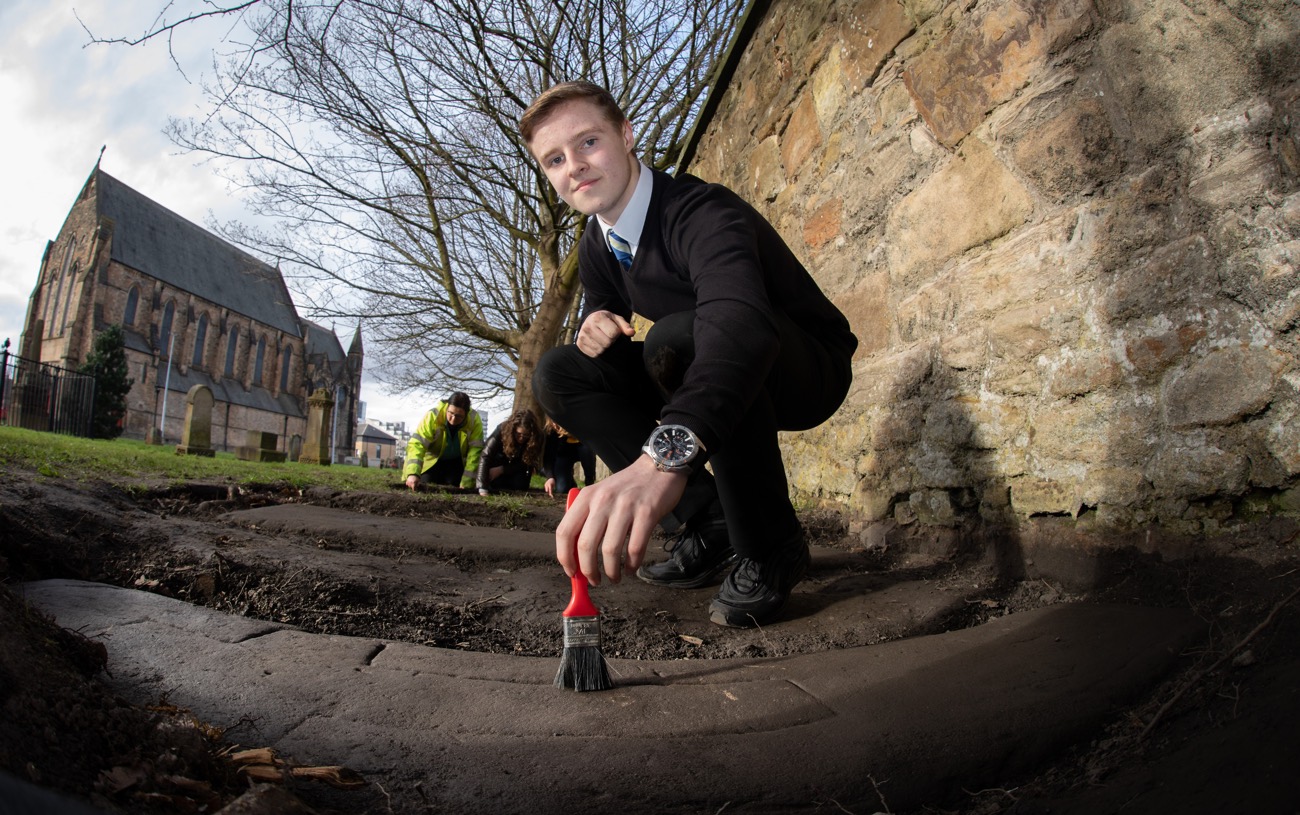
Mark McGettigan poses by one of the three newly discovered Govan Stones. The cross on the stone attests to a long history of Christian activity at the site. Many of the Govan Stones already on display feature crosses surrounded by interweaving Celtic designs. The other common carving type is called a "hogback." These were sloping stones, made to look like a long hall or house. According to Driscoll, these hogbacks are found where Vikings were attempting to consolidate power in Britain, perhaps representing some sort of symbolic fusion of British and Norse culture.
Searching for stones

The initial stages of excavation. The discovery that three Govan Stones survived the demolition work of the 1970s has archaeologists hoping that the other lost Govan Stones may still turn up. The newly excavated stones will be preserved and protected.
Sign up for the Live Science daily newsletter now
Get the world’s most fascinating discoveries delivered straight to your inbox.

Stephanie Pappas is a contributing writer for Live Science, covering topics ranging from geoscience to archaeology to the human brain and behavior. She was previously a senior writer for Live Science but is now a freelancer based in Denver, Colorado, and regularly contributes to Scientific American and The Monitor, the monthly magazine of the American Psychological Association. Stephanie received a bachelor's degree in psychology from the University of South Carolina and a graduate certificate in science communication from the University of California, Santa Cruz.










